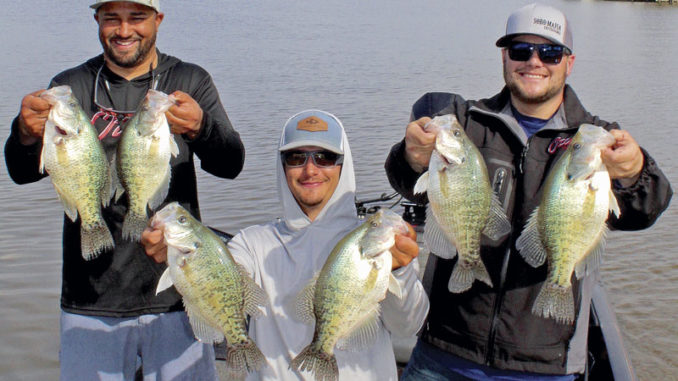
Top pros share approaches that get sinking crappie to take the bait
Can you dig it? That 1970’s phrase literally meant asking someone if they enjoy something; you know, is it groovy? A lot of people “dig” crappie fishing, but “digging” crappie can take on a new meaning today.
Forward facing sonar has enabled crappie anglers to find and catch more and bigger fish and is an unprecedented learning tool when it comes to the habits of crappie. One lesson learned is that crappie will settle on the very bottom, literally in the mud. Sometimes you just have to dig them out.
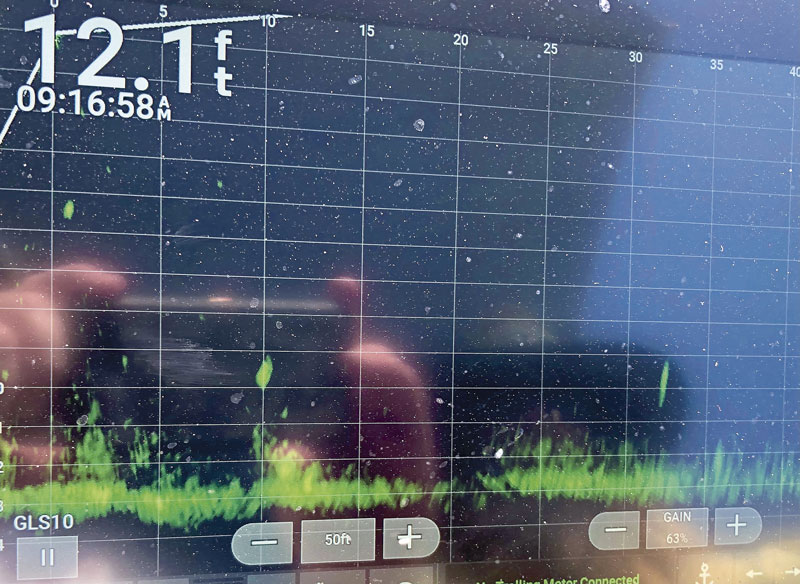
Fishermen using live sonar have been here: You ease along a flat and spot a trio of big crappie on the screen. As you get within distance to drop a jig, two just slowly sink down to the bottom. A few minutes later, the other fish (showing as a blip on the screen), slowly swims away. Sometimes the fish just hang out on the bottom all the time unless they are actively feeding.
Three pros who fish numerous tournaments in Louisiana waters and all around the south recently shared their thoughts on this subject with us. They are Hayden Jeffries of Brandon, Miss., Lamar Bunting of Conway, Ark., and Nick DeWolf of Bossier City.
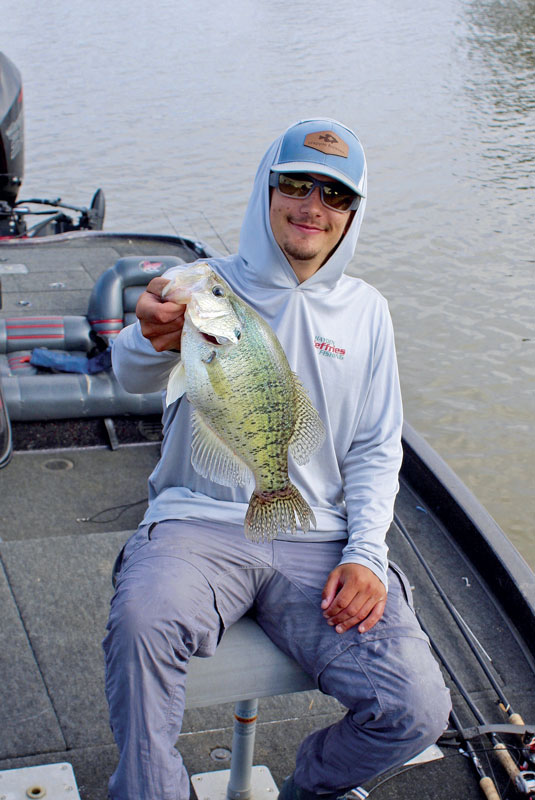
Hayden Jeffries
“I see fish on the bottom a lot and I think it’s just a matter of they are comfortable down there, especially the real big ones,” said Hayden Jeffries of Mississippi, the hottest angler on tour right now. “But it’s not always easy to catch them there. They are usually a little bit more difficult to catch than the suspended fish.
“It’s difficult to see them, but you just have to focus on seeing the shape of a crappie in what you are looking at on the screen. When you find them, they will bite pretty much the same thing that other fish you are catching bite. You don’t have to do anything fancy. You do want to keep your bait above them and not let it go all the way to the bottom.”
Jeffries used that technique in his most recent win at Grenada Lake where he and his dad caught two seven fish limits weighing a total of 40.16 pounds with a big fish of 3.62 pounds, just under an average of three pounds per crappie. They also used the this technique often as they captured all three major professional crappie national championships in 2022.
He reiterates how important it is that anglers remember that even though crappie are on the bottom, they are not bottom feeders. They still feed “up,” so always keep the bait slightly above them, not on the bottom. He also said once you find them on the bottom, just use the same baits and presentations that you would if they were suspended or in a brushtop.
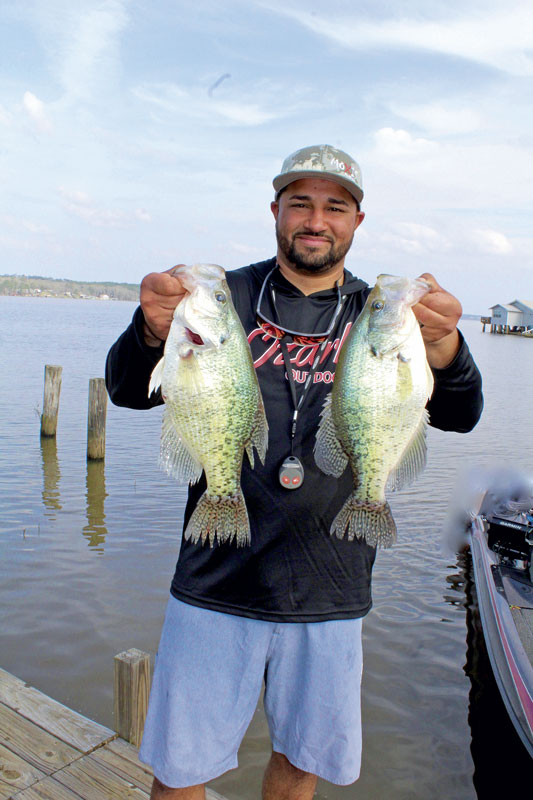
Lamar Bunting
Fellow pro Lamar Bunting of Arkansas agreed.
“If you are fishing an area that you know holds fish and you aren’t seeing them up in the water column, they are still there,” he said. “They didn’t leave the lake, so the only place they can go is to the bottom. I look at the bottom closely and see if there is some sort of movement or some sort of bumps. If I do, I know that is probably fish.”
Bunting said fishing the bottom isn’t new, but the new technology has allowed anglers to see what’s going on. And you still have to be able to distinguish crappie from other fish.
“We used to spider rig a lot and some of the biggest fish we caught were on the bottom,” he said. “We would lower our baits to the bottom, give the reel one turn and that’s where we would fish, pulling our baits just off the bottom.”
He also agreed that sometimes that is the only place big crappie can find a comfort zone, especially when fishermen are present. He said the vibration of the trolling motor or just the pressure of the boat in the water above them can trigger the fish’s senses. On calm days it is worse, but when it is windy it seems like less of a problem to him. He also said that if you see a fish that is suspended, but it starts to sink, pay close attention to where it goes, then take a few minutes and drop your bait right to that spot.
“If you put it on her head, she’s going to bite it nine times out of 10,” he said. By the way, Bunting and his partner finished second in that same recent Grenada tournament with 14 crappie weighing 37.69 pounds.
Nick DeWolf
DeWolf is a former bass fisherman that didn’t crappie fish before forward facing sonar, but the way it performs helped switch him over. And he has noticed the same things with spooky and sinking crappie.
“My theory is that the big two pounders go to the bottom a lot more often than smaller fish because they don’t have to compete as much for food. They can eat bigger shad and other bait, so they stay on the bottom more,” he said. “The one pounders and smaller fish, when you see them all in a bunch, they are all competing over the same food. Even on finicky days, they’ll often chase your bait.”
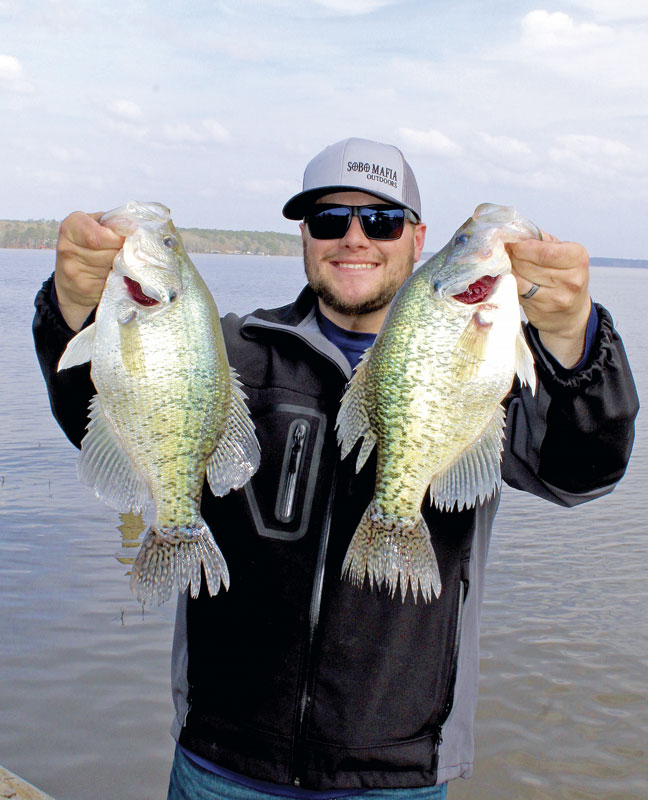
DeWolf said on the sonar, when he’s searching for big ones, he’ll often see what looks like small stumps on the bottom.
“I drop by every little stump-looking spot I see because you’ll find a lot of them start moving and take your bait. They are big crappie,” he said. “Sometimes I’ll even bounce a bigger bait on the bottom or on them to make them move. Then when they settle back down, they’ll bite.
All three of these anglers have actually caught fish with mud on their bellies, especially this time of the year.
DeWolf is also very active in promoting Autism Awareness and features a fishing boat that is wrapped in various bright colors representing the Autism Awareness logo.
In addition to being three of the most followed anglers on the pro circuit, these anglers also do more than just fish and share their tips. They are all active in promoting the sport and recently teamed up to star in a series of Ozark Outdoors Challenge videos on Facebook and YouTube. Check them out.


